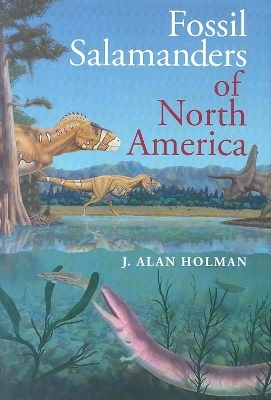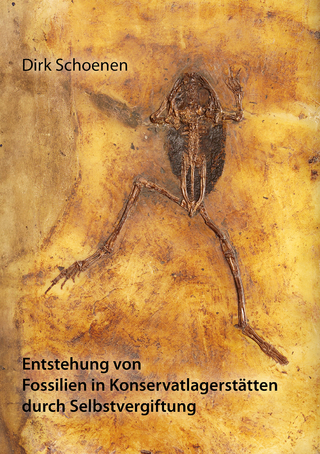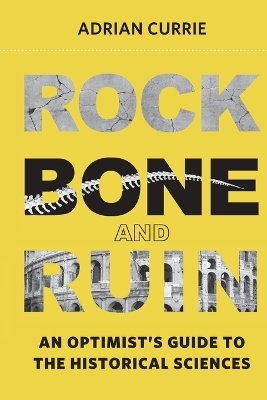
Fossil Salamanders of North America
Seiten
2006
Indiana University Press (Verlag)
978-0-253-34732-9 (ISBN)
Indiana University Press (Verlag)
978-0-253-34732-9 (ISBN)
- Lieferbar (Termin unbekannt)
- Versandkostenfrei innerhalb Deutschlands
- Auch auf Rechnung
- Verfügbarkeit in der Filiale vor Ort prüfen
- Artikel merken
Presents a systematic account of the known fossil salamanders of North America, illustrates and discusses the extinct salamanders, re-diagnosing or redescribing some on the basis of additional information and fossil material.
Call them "mudpuppies," "hellbenders," or "mud eels," salamanders are puzzling animals to most people. They come in forms that look like flattened fish with legs, like eels, like slimy lizards, or like lizards with toad-like skins. Their life history imitates the ancient evolutionary transition from aquatic to terrestrial vertebrates, though several groups remain permanently aquatic. Until now, no one has written about their ancient ancestors. Holman details the process of the identification and interpretation of the fossils. He presents a detailed systematic account of the known fossil salamanders of North America, illustrates and discusses the extinct salamanders, re-diagnosing or redescribing some on the basis of additional information and fossil material. He also gives the modern characteristics, ecological attributes, and modern ranges of the fossil taxa that are still living. The book begins with an overview of the Caudata and describes their early evolution. Then follow the systematic and chronological accounts of the salamanders. The book concludes with a discussion of the study of fossil salamanders as it relates to the development of a realistic phylogeny and classification of the group.
Call them "mudpuppies," "hellbenders," or "mud eels," salamanders are puzzling animals to most people. They come in forms that look like flattened fish with legs, like eels, like slimy lizards, or like lizards with toad-like skins. Their life history imitates the ancient evolutionary transition from aquatic to terrestrial vertebrates, though several groups remain permanently aquatic. Until now, no one has written about their ancient ancestors. Holman details the process of the identification and interpretation of the fossils. He presents a detailed systematic account of the known fossil salamanders of North America, illustrates and discusses the extinct salamanders, re-diagnosing or redescribing some on the basis of additional information and fossil material. He also gives the modern characteristics, ecological attributes, and modern ranges of the fossil taxa that are still living. The book begins with an overview of the Caudata and describes their early evolution. Then follow the systematic and chronological accounts of the salamanders. The book concludes with a discussion of the study of fossil salamanders as it relates to the development of a realistic phylogeny and classification of the group.
J. Alan Holman (1931-2006) was Professor and Curator Emeritus of Vertebrate Paleontology at Michigan State University. He wrote seven books, including Fossil Snakes of North America (IUP, 2000) and Fossil Frogs and Toads of North America (IUP, 2003).
Contents
Preface
Acknowledgments
Abbreviations
1. Introduction
2. Systematic Accounts
3. Chronological Accounts
Epilogue
References
Figure Credits
Index
| Reihe/Serie | Life of the Past |
|---|---|
| Zusatzinfo | 81 b&w photos, 3 indexes |
| Verlagsort | Bloomington, IN |
| Sprache | englisch |
| Maße | 178 x 254 mm |
| Gewicht | 712 g |
| Themenwelt | Naturwissenschaften ► Geowissenschaften ► Mineralogie / Paläontologie |
| ISBN-10 | 0-253-34732-7 / 0253347327 |
| ISBN-13 | 978-0-253-34732-9 / 9780253347329 |
| Zustand | Neuware |
| Haben Sie eine Frage zum Produkt? |
Mehr entdecken
aus dem Bereich
aus dem Bereich
Buch | Softcover (2024)
Shaker (Verlag)
19,80 €
An Optimist's Guide to the Historical Sciences
Buch | Softcover (2024)
MIT Press (Verlag)
34,55 €


